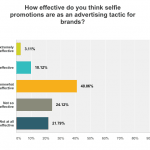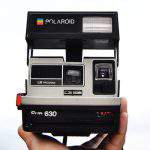In the age of all-things-mobile and instant gratification, taking a quick selfie has rapidly become a normal part of many people’s personal lives and is practically ubiquitous on social media feeds. Even monkeys have famously gotten the hang of taking a proper selfie.
Meant to be fun and impulsive, selfies are for capturing the moment as it happens—and quickly sharing with family and friends.
Selfies, and specifically selfies that appear on social media, have also helped kickstart an entirely new kind of business for the cosmetic surgery industry. And they’ve given life to new products with whimsical names like the Selfie Stick and introduced us to, ahem—Belfies.
But are companies misjudging the market? How do consumers really feel about selfies? And how likely are selfie campaigns to work in the future? Using SurveyMonkey Audience, we asked more than 400 people their opinions on the state of the selfie.
Alright. Let’s get our selfie on, shall we?
Whether inclusion into the Oxford Dictionary helped boost the familiarity of the word itself or not, it’s clear that our respondents are well-versed regardless. Nearly 80% reported that they’re extremely to very familiar with the word “selfie.” When asked if they had ever taken a selfie themselves, more than 60% said indeed they had. Surprising? Maybe not.
Let’s take a look at some of the data that did surprise.

Really…A few times a year or less? But when we threw on a Compare rule and broke our results down by age, we learned that there was a marked difference.
Those aged 45-60+ reported taking selfies the least which made a bit more sense to us. The younger set, those between the ages of 18-29, said they took selfies a few times per week and a few times per month (43% combined)—always count on those whippersnappers to keep trends alive.
Now let’s get down to business.

Ouch. A resounding NO—hear that, creative directors and brand strategists? Perhaps think twice before using a selfie in your next big ad campaign because according to our respondents, consumers aren’t rushing to pull out their wallets just because you’re giving a nod to this social trend.
Then we dug in a little deeper:

Again, our results were surprising in that even though our respondents said they wouldn’t necessarily purchase a product or service because of selfies in a campaign, it doesn’t mean that they didn’t find the promotions themselves somewhat effective (41%). It would be interesting to dig into that data even deeper with a followup question on say, what the different definitions of an “effective promotion” is exactly. Were the appropriate feelings and reactions evoked as a result of the selfie ad campaign? Did it make consumers consider purchasing something but just not enough to actually pull the purchasing trigger? Another survey for another time perhaps.
If you are indeed given the creative challenge of incorporating selfies into a marketing strategy or ad campaign? Keep this in mind—motivation.

At either end of the spectrum here, you can see that people like to do selfies simply because they’re fun to make and they want to have a “special moment” seen by their friends and loved ones. In other words, sticking close to the heart and tapping into people’s emotions may be the savvier way to encourage them to reach for their wallets.
So we’ll have to wait and see if selfies end up having a meaningful (and profitable) place in the business and marketing world. What’s pretty apparent to us so far is that as long as smartphones and social media exist, we’ll still be hearing, “Wait, wait. Let’s take a selfie first!”
What do you think? Do selfies have a serious chance at helping businesses and brands grow? Seen any campaigns recently that use them effectively? Let us know in the Comments below!




